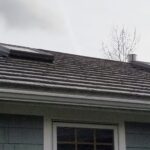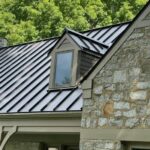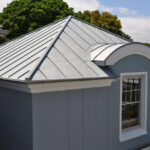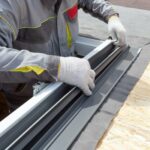Expansion and Contraction
ISSUE
It is well known that all materials, including metals, will expand and contract with temperature changes. In the case of conventional roofing shingles, it is often this expansion and contraction that breaks down the materials and leads to roof failure.
ANALYSIS
The expansion and contraction of metal roofing is a predictable and documentable thing. Therefore, it is relatively easy to allow for expansion and contraction when designing a quality, long-term metal roof system.
SOLUTION
The “seams” or “laps” between metal roofing panels should be actual interlocks that allow for the expansion and contraction. Trying to simply “lap” two pieces of metal together is difficult and problem-prone. An additional factor with expansion and contraction is fastening. There are fastening methods that allow for the movement of the metal without fatiguing or pulling out the fasteners and without “wallowing-out” the nail holes in the metal. The most common way to do this is to secure the roof panels using small metal clips. The small metal clips are actually attached to the roof deck but they then lock over the roof panels and hold them in place while still allowing the panels to “slide” a bit with expansion and contraction. Some metal roof systems successfully use one solid fastener on each panel which acts as a “steady point” and then secure the rest of the panel with clips. One other method of allowing for expansion and contraction is to design the metal roof panels in a way that allows for an “accordion-effect” in the metal when expansion and contraction occurs. This accordion effect can leave the fasteners securely in place while still allowing the metal to move a bit.




